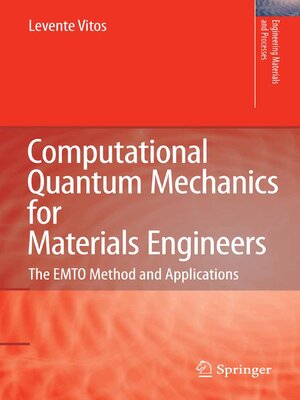Computational Quantum Mechanics for Materials Engineers
ebook ∣ The EMTO Method and Applications · Engineering Materials and Processes
By Levente Vitos

Sign up to save your library
With an OverDrive account, you can save your favorite libraries for at-a-glance information about availability. Find out more about OverDrive accounts.
Find this title in Libby, the library reading app by OverDrive.



Search for a digital library with this title
Title found at these libraries:
| Library Name | Distance |
|---|---|
| Loading... |
Forcenturies,composersandmusicianssuccessfullycomplementedeachother. Composers provided humanity with superb compositions, and musicians have been making attempts to vivify the mysterious staves. Great performances, thosethatmanagedtocreatetheexpectedorsometimesunexpectedemotions, always captivated the audience and broke fresh ground for new artworks. The present work belongs to the world of "instrumentalists" and ventures upon creating new perspectives within the ?eld of electronic structure of solid materials. We also have our own great "composers", such as Walter Kohn and Ole Krogh Andersen. Kohn established the Density Functional theory, the most elegant and useful formulation of the many electron problem, and for that he deservedly won the highest award within the scienti?c world. - dersen created e?cient tools to solve the basic Density Functional equations for solids. Today, his theories are widely used in computational materials science. In January 1997, Andersen, looking for experts within the ?eld, c- tacted Hans Lomholt Skriver's group in Lyngby, and asked then to vivify his latest tool belonging to the third generation mu?n-tin methods. Since then, many new incarnations of these methods have come to light. This monograph revealsanimplementationofoneoftheoriginalapproaches,namelytheExact Mu?n-Tin Orbitals (EMTO) method. Today theoretical condensed matter physics, besides its fundamental m- sion to facilitate the understanding of the properties of solid materials at the atomic level, also strives to predict useful quantitative and qualitative data for the development of high-performance materials. Computational quantum mechanics brings an increasing demand for new techniques, which make t- oretical investigations more handleable bytoday's computers.







